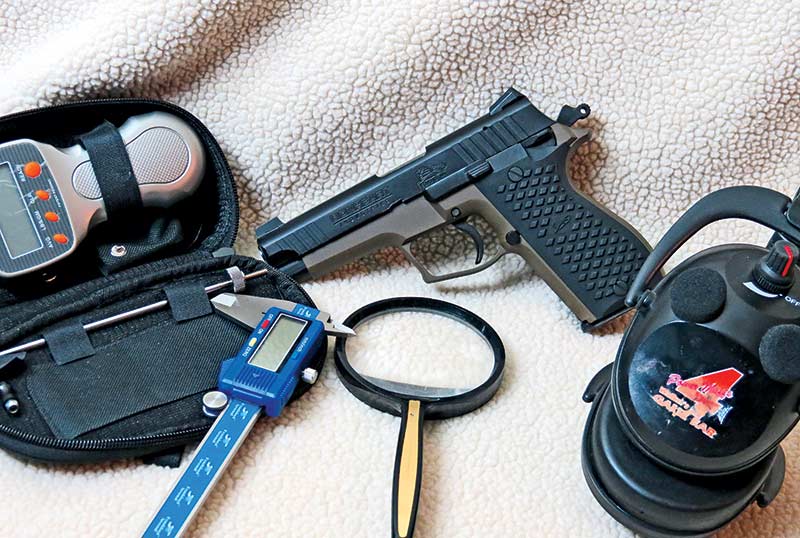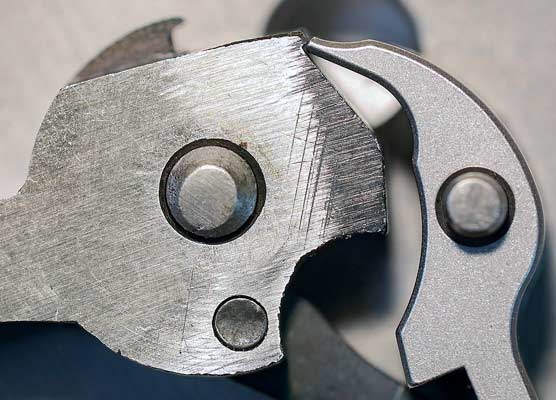Stuff You Don’t Read
The Back-Beat Story On Connor-Style T&E’s
The shop was quiet. I sat with electronic range muffs on and my eyes closed, holding a pistol to the left side of my head. I was slowly squeezin’ the trigger when the door squeaked open and RJ blurted, “Sir? What the heck are you doin’?!” He’s our youngest DARM (Deputy Assistant Range Monkey). His eyes were buggin’ and he looked like he was gulpin’ golf balls. I put the gun down and laughed. “What did it look like, kid?”
“Like you were gonna blow your brains out, but, uh … you didn’t want the noise to hurt your ears?” He blushed furiously. “Wow, that’s messed up — and weird, sir.” I laughed ’til I ’bout peed myself.
Told him I was listening to a trigger. See, my hearing is damaged from gunfire and ordnance, more on the right than the left. So, I turn the right muff off to suppress ambient sounds, and turn the volume to maximum on the left muff. Amplified, you can sometimes clearly hear what your finger can only sorta detect. If you listen close to a glitch or rough spot, you can hear things like, is it a steady frictional sound, a tik! or a grritt? Is it repetitive or erratic? Duzzit change location?
You can see how that leads to three questions: Is this glitch in the design, is it only in this pistol or is it a serious manufacturing problem? Then, is it correctable? A “frictional” can fade with use. A consistent tik might be just a trigger-connected safety working. A grritt is always bad news. Maybe fixable, but bad news.
I do the same thing with slide cycling and revolver rotation; feeling and listening for problems, inconsistencies or sometimes just characteristics of the design. If during rotation a revolver cylinder drags consistently at a given point, or the trigger pull stiffens, would that ring your bell? How ’bout inconsistently? I wanta know before I shoot the weapon for T&E, and then compare findings after putting a coupla hundred rounds through it. Often, any frictional “white noise” from both triggers and actions vanishes with proper break-in, and actions smooth right out. Often, not always.
Kickin’ Tires, Checkin’ Oil
I bust out the magnifier and hit the pinpoint light to inspect firing pin and striker noses, and extractors, checking both the face and the claw. If there were any dings or wear after only, say, 400-500 rounds, wouldn’t you wanta know about that? Does the extractor wiggle like a loose tooth or does it have good tension? If a trigger has a little play front-to-back, no big deal, but if it has wobble side-to-side, whattaya think? Worrisome? I’m not a gunsmith — not even a good gun mechanic — but I can figure out where potential wear, chatter and bash-points are, and I wanta see ’em up close and personal before and after shootin’.
I test safeties — and then try to spoof ’em. The first time you put a manual safety on, then pull the trigger and find the gun woulda gone bang! if there’d been a round in it, well … Your attitude on consumer testing changes. If a manufacturer says a pistol will not fire if it’s even slightly out of battery, who checks that? I think it’s my job. Am I wrong? Have you ever tried repeatedly to see if short-stroking a trigger will make it seize up? Tried casually “bumping off” a safety feature, or bumping a hammer off full cock, or tripping a tensioned striker system with a blow in the right place? I do it.
Using inert rounds, I’ll put a gun in carry-condition, stick it in a coat pocket with keys and coins, then gnarfle the coat like a mad monkey to see how much persuasion it takes to fire it. You’d wanta know, right? If I tell you that firearm X requires a complete, proper, deliberate pull, you can bet I’ve tested it.
On the range, I always shoot firearms canted to 3, 6 and 9 o’clock to see if that’ll jam ’em, then shoot ’em as close to straight up and straight down as I can get away with. Most can handle it, a few can’t. I figure, better I learn this in the dirtbox than have you learn it in a fight — right? Often I shoot autopistols up close to a vertical support on the right, to see if brass bouncin’ back at the action might cause a malf.
I pay attention to extraction and ejection, and where brass is thrown. I’m looking for consistency. Different loads will throw differently, but if the distance and angle is erratic with any or all loads, that indicates a problem. If it’s one type of ammo, I run chrono tests on it. If it shows a wide “extreme spread” in velocities, there’s your answer. If it’s not the ammo, then it’s the gun — maybe not an immediate problem, but of the “bite you in the butt later” variety.
Expended brass is checked for all the usual suspects: inconsistent primer indents, split case mouths, gouging and tearing of extractor grooves, all that. Then comes all the post-poppin’ exams.
Why Don’t You Read This?
If it ain’t remarkable, I don’t remark on it. There ain’t enough word-space for everything. Like now. RJ asked if all professional gunwriters do this stuff. That stumped me.
“I dunno,” I said. “I ain’t one, and never asked one.”





